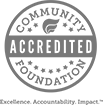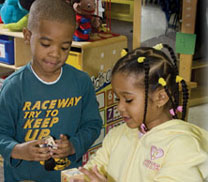
Since the Civil War, children have found an activity-filled place to get their little lives off to a good start at Toledo Day Nursery.
Operating from four locations in Toledo, the Nursery offers children of working and student parents quality, affordable childcare programs to help with educational, social, emotional and physical development.
Since 1998, the Toledo Community Foundation has given grants totaling more than $220,000 to the 138-year-old nursery to “sing and soothe” infants to five year olds.
“The Foundation has always been our friend and supports us in all our ventures. With them we are able to put smiles on children’s faces,” says Pat Scheuer, executive director.
Today some of the children are the third generation of their families to attend the nursery that offers a safe environment. Regardless of income, all children are welcome and everyone pays a fee to attend the nationally accredited program.
“We had a grandfather who brought his grandchild to the nursery and just smiled. He said he remembered the warmth he felt as a child going to the nursery as soon as he walked through the door,” says Pat who has directed the nursery for 10 years.
Receiving compliments from kindergarten teachers on how well Toledo Day Nursery school graduates are prepared makes for a highly successful program that is a positive reflection on the children and the community.
Meet Eleanor S. Longbrake
In an era when a woman’s place was very different from what it is today, she was a pioneer.”
So observed Bill Longbrake, whose aunt, Eleanor S. Longbrake, broke new ground in many quiet ways throughout her 97 years.
Born in 1913, Eleanor had a keen interest in nature and science from a very early age. She was an exceptional student, and earned scientific degrees from the College of Wooster and The Ohio State University at a time when fewer than ten percent of Americans graduated from college.
Eleanor began teaching science at Toledo’s Scott High School in 1939. But just three years later, after the U.S. entered World War II, she joined the war effort by enlisting in the WAVES. As a naval officer, Eleanor became one of the 6000 weather forecasters trained for the war effort — only 150 of whom were women.
“Aunt Eleanor was very generous, and had a deep sense of duty, as well as a love for science and education. She’d take me on ‘field trips’ to explore nature when I was a kid, and helped pay for my college education. Even when she wasn’t in the classroom, she was always teaching.”
BILL LONGBRAKE
When Eleanor returned to the classroom, she became Scott’s first College Advisor, helping hundreds of Scott students pursue higher education years before area schools had guidance counselors. In 1960, Eleanor left Scott to supervise science programs throughout the Toledo Public Schools for the next 17 years. She remained active in retirement, teaching Sunday school and volunteering.
With her Toledo Community Foundation legacy fund, Eleanor’s dedication to area youth and their education continues. In the years since her passing in 2010, the Eleanor Longbrake Fund has supported summer science and college readiness programs, her two great passions as a teacher more than 60 years ago.
“Aunt Eleanor was very generous, and had a deep sense of duty,” said Bill of his aunt’s philanthropy, “as well as a love for science and education. She’d take me on ‘field trips’ to explore nature when I was a kid, and helped pay for my college education. Even when she wasn’t in the classroom, she was always teaching.”
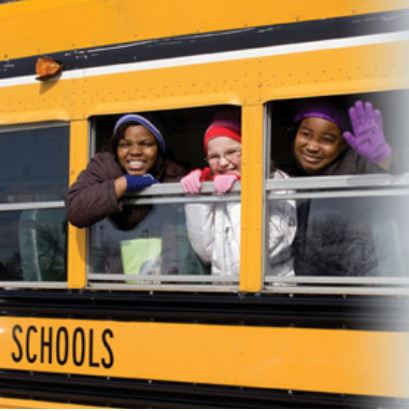
“Thank you for letting me go to the zoo. I saw a lion and it was cool,” wrote one amazed Fulton Elementary School student after a Toledo Community Foundation supported school field trip.
For a child, a school field trip creates lasting memories. Years after the bus ride, adults share stories about their first time at the zoo or the planetarium with their own children.
In 1992, the Foundation created the Transportation Assistance Project (TAP) Fund to help create life-long field trip memories.
More than 1,080 grants totaling over $288,000 have been awarded to the Toledo Board of Education and Central City Ministries of the Diocese of Toledo to give many disadvantaged children a chance to see the world outside of their neighborhood.
Field trips are taken to visit enriching educational locations in Northwest Ohio with the TAP Fund of the Toledo Community Foundation paying 80 percent of the transportation costs, and the schools covering the balance.
With the support of generous donors like you, many wonderful memories are created for children to explore and dream.
Meet Darcy Wagner, Ph.D.
A lifestyle of giving began early for Darcy Wagner, Ph.D. “Giving was a way of life for our family. When we were little, the three of us kids would fight over who got to put the envelope in the church basket,” she said, “so it goes way back.”
Darcy’s father, who was the principal of St. John’s Jesuit High School, also had creative ways of instilling in his children the value of sharing and service to others. “Dad began a tradition called the Christmas Envelope. Each of us kids got an envelope with money in it, and we had to give it away. We could give it to whomever we wanted — but we had to give Dad the envelope back with the record of where the money went. When the envelopes were read at Christmas, it was a very cool moment.”
When it came time to choose a college, Darcy knew she wanted to be at a school that furthered those Jesuit values, so she chose Gonzaga University. “It was also a culture where all the people around me were giving in some way, and it was really important to me to be a part of that culture,” she said.
Darcy’s commitment to funding a lifestyle of giving began early, too. At age 25, Darcy became one of the youngest people in the 40-year history of the Foundation to establish a Donor Advised Fund.
Now a postdoctoral researcher in Munich, Germany, Darcy is serving others through her career in lung transplantation research — and one of the very first grants she made from her fund was to supply her high school alma mater, Notre Dame Academy, with scientific equipment.
“I grew up in Toledo, and I want Toledo to succeed — even if I’m somewhere else in the world, I want to see my community grow.”
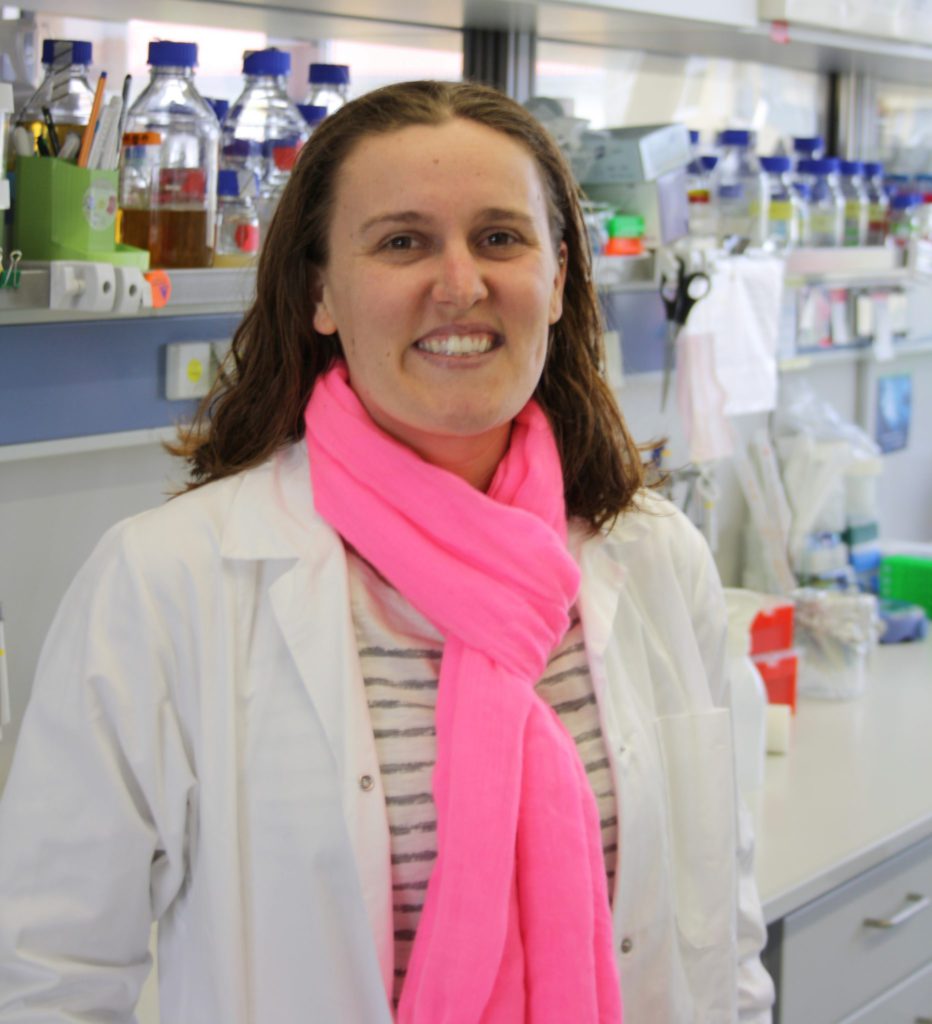
Describing her purpose for establishing a charitable fund at the outset of her career, Darcy said, “I knew giving was something I wanted to do with my whole life — not just the end of my life. I might not be able to give as much right away, but over the course of my lifetime, I’ll be able to give so much more than I would have without it. And when I pass away, my family or descendants can continue what I started.”
At age 25, Darcy became one of the youngest people in the 40-year history of the Foundation to establish a Donor Advised Fund.

William Lewis, age 50, knows exactly what he wants to do in his life. He wants to get his GED and read a book to his grandsons.
With grants from the Toledo Community Foundation to Read for Literacy, William is working toward his very important goals.
Twice a week, William meets with his volunteer tutor Mary Berry for two hours learning how to read. Even though William went to school until the ninth grade, he did not know his alphabet.
Read for Literacy provides adult basic literacy tutoring to Toledo area residents to learn to read or improve their reading skills. Ninety percent of the Read for Literacy students read at or below the fourth grade level.
Mary, who is retired, loves to read and wanted to give back to the community. Mary and William have been a team for over six months and are making progress.
The Foundation grants were for $12,750 over three years to upgrade tutor training material and $18,081 for one year to expand the agency’s outreach program to recruit students from central city churches and neighborhood centers.
“I’m learning to read because I want to do it. Not because anyone tells me I have to do this. I have more energy about life and I feel good about myself,” says William.
Ken and Jean Lovejoy
Giving — and having solid information on which to base it — matters to Ken and Jean Lovejoy.
“We’re both data-driven people,” said Jean, describing their approach to philanthropy. Both graduates of The University of Toledo, Ken went into engineering and Jean into pharmacy — “so it goes with our training.”
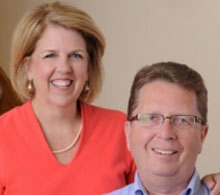
Not surprisingly, then, their annual charitable giving decisions used to be stressful. “We’d look at a folder full of appeals and try to decide which ones to support. We were giving under time pressure, in a very scattered way.”
Things changed when the Lovejoys established their donor advised fund with the Toledo Community Foundation in 2011. “Before, our donations were a mile wide and an inch deep,” said Ken. “Now, we evaluate our annual plan and submit a single donation to the Toledo Community Foundation, then assess where the funds should go over the next several months.”
“It’s more enjoyable to give this way — and we can use the Foundation’s website,” said Jean. “The Foundation vets each organization listed, and the facts they provide are invaluable.”
In 2012, Ken and Jean again turned to the Foundation to establish a Legacy Fund. A portion of the fund will ultimately go to the UT Colleges of Engineering and Pharmacy, with the balance to other area organizations.
“Education has done much for us, and helping others to benefit from an education is a priority,” said Ken. “We recognize that estate planning objectives and priorities can change, so the flexibility of a Legacy Fund is very attractive. If our other charitable goals shift over time, we can make changes without altering our will.”
“When we started our first fund, we considered other options,” said Jean, “thinking a Toledo-based foundation might be limited, or that they could only fund local entities. We were delighted to find otherwise — their service is truly outstanding.”
Showcasing Nature's Heritage
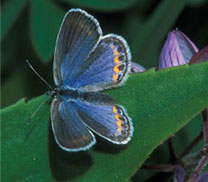
Kitty Todd was a woman of conviction. Before her death in 1980, she helped lead the charge to preserve and protect one of the highest concentrations of rare species of any nature preserve in Ohio.
A dedicated conservationist, Kitty, who lived in Perrysburg, saw the need to save one of the finest examples of northwest Ohio’s Oak Openings Region. It is home to the globally endangered black oak savannah community and over 170 other rare species.
To honor her tireless efforts, The Nature Conservancy, Ohio Chapter renamed 627 acres in Oak Openings near Swanton the Kitty Todd Nature Preserve upon her death.
Since that time, The Nature Conservancy has made strides in restoring the land and preserving life. The Greater Toledo Community Foundation has awarded numerous grants to the preserve to continue transforming the unique habitat.
“Kitty Todd is the only project that we have so close to an urban area and is the best example of how Oak Openings looked in the past,” says Rich Shank, State Director for The Nature Conservancy, Ohio Chapter.
“The preserve is open to the public from May through October to enjoy and for me it’s not unlike visiting an art museum. At the museum, you observe great works of art. At the preserve, you observe some of the rarest examples of nature.”
With the Foundation’s grants, restoration work has been done and the land modified for the return of the Karner blue butterfly, which is on the federal endangered species list. Working in conjunction with The Toledo Zoo, the Conservancy has reintroduced the tiny butterfly to the preserve, and where it has thousands of wild lupine plants to enjoy. The butterfly can only live where lupine thrives.
Establish Your Fund
Seeking a Grant?
Visit www.toledocf.org for complete information about the Foundation's grant making. For additional information, contact Senior Program Officer, Patrick Johnston, at Greater Toledo Community Foundation, 419.241.5049.
In addition, the Foundation supports the preserve’s land stewards. “The stewards are nature’s gardeners. They make sure the natural species live in the preserve and remove species that invade this northwest Ohio treasure,” adds Rich.
Every spring the preserve hosts a celebration called Blue Weekend. “It’s the time when the blue lupines are blooming and Oak Openings is at its finest. Volunteers help visitors enjoy the hiking paths and give presentations on what to look for in the preserve.”
Throughout the season, volunteers offer programs to provide educational opportunities and hands-on restoration activities to inspire preservation efforts for future generations. For nearly five years, Maumee Valley Country Day School students in Toledo have collected seeds at the preserve in the fall, planted them in the school’s greenhouse, and in the spring take the seedlings back to the preserve for continued growth.
“Kitty Todd is resource intensive and we could not accomplish what has been done so far without the Foundation’s generous support. The Foundation is restoring the natural heritage of northwest Ohio and we are grateful for the investment,” concludes Rich.
Kiriyanthan & Thresiamma Jacob
Nearly 50 years ago, Kiriyanthan Jacob graduated with an engineering degree from the University of Michigan and left for his homeland, India, to find a bride.

The adventure concluded in his wedding to Thresiamma, herself a recent graduate from medical school. Together, they returned to make a new home in Northwest Ohio.
Two careers, two children, and twelve grandchildren later, the Jacobs began to consider ways they could use their estate to help others. They wanted to provide for community needs here — and they had a deep, heartfelt commitment to something special in India.
“Years ago, we visited an institution near my hometown that served the mentally ill,” said Dr. Jacob. “We decided to construct a new rehab center there, which was completed in 2009.” Dr. Jacob, a psychiatrist, explained: “Their services are badly needed, because mental problems are still very taboo in India. They receive no government or church funds, so private donations are essential.”
When their attorney learned of their interest in continuing to provide for the mental health center, he advised the Jacobs each establish a Legacy Fund with the Toledo Community Foundation. A Legacy Fund is created while the donor is living, but has no assets until a “trigger event,” usually a death, occurs.
“Government restrictions make donating to overseas charities difficult,” Mr. Jacob observed. “The Foundation has the capacity to properly vet the recipients of our gifts, and to make sure all government requirements are met.”
The Jacobs also like that their Legacy Funds bring ongoing blessings to others in both countries. “Rather than making a one-time gift, a Foundation endowment will provide funds to the charities we choose for years to come,” said Mr. Jacob. “Working with the Toledo Community Foundation made that possible.”
Glass House Writing Project Affects Lives
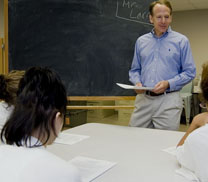
With all of the problems in the world today, it’s easy to feel that a solution to those problems would require an army of people, dedicated to making the world a better place. But surprisingly often, a solution only takes one person – a person with enthusiasm and commitment – to have an impact on a community. The Glass House Writing Project is a demonstration of a way in which one man has been able to begin to affect his own community. Through the project, many “at-risk youth” have had access to a writing program that gives them tools to achieve success in their lives and a creative outlet to contend with the world’s problems that can often seem so overwhelming.
Turning Dreams into Reality
When Larry Levy, director of the Glass House Writing Project, returned to Toledo after serving three years as the poet-in-residence for the West Virginia Arts and Humanities Council and another 15 years as a corporate sales executive, he knew he wanted to continue to use creative writing to affect children’s lives. What he wasn’t yet sure of was the way in which he wanted to go about it.
Through a partnership with the Arts Council Lake Erie West, Larry was able to turn his dream into a reality. The program he envisioned would seek underserved populations and teach creative writing, while exploring the connections between writing, other art forms and literature. Time spent in the Appalachia areas of West Virginia teaching creative writing to underprivileged children helped Larry develop this vision. But in Toledo, unlike in West Virginia, he wanted to work with children long-term, and he specifically wanted to affect the lives of “at-risk youth.”
Charity of Your Choice
The Foundation invested in this project that helps build lives and strengthens our community. To learn how to support a charity of your choice, please contact one of our Philanthropic Services Officers at 419.241.5049, or email Bridget Brell Holt at [email protected].
Call 419.241.5049“I began to develop this program by interviewing curriculum directors in the Toledo area. My question was, ‘How do you teach writing?’” Larry says. The answer was astounding: barely any classroom time was spent on creative writing exercises. Instead, teachers felt overwhelming pressure to “teach to the test” – a pressure that forced many classrooms to de-emphasize creativity.
According to Ohio’s education guidelines, by the time a student leaves the 10th grade, he or she should be able to understand the basic elements of literature, including plot structure and character development. Larry felt that one of the best ways to help students reach this “benchmark” was by teaching them about the writing process. “I find that writing makes children better readers,” he adds.
Benefits Abound
So a writing program, focused around poetry and creative writing, was what Larry pitched to Toledo-area schools. “It wasn’t a hard-sell,” he explains, “and once I started to teach the programs at schools, I was able to partner with other entities.” Through the Arts Commission of Greater Toledo, Larry worked with the TARTA bus system on a project entitled Art in TARTA, through which students developed poetry that was then written both around and inside the busses.
In the midst of working in schools, Larry also sought to work with at-risk students, and again through the Arts Council Lake Erie West, Larry partnered with the Lucas County Juvenile Justice and Detention Center in 2003 to teach reading and writing skills to incarcerated youth. “Most of the youth assisted by this program are well behind expected grade level achievement due to incarcerations, learning disabilities, chronic truancy, drug use, and chaotic family backgrounds,” Larry shares. “Marginal literacy and functional illiteracy prevail.”
The benefits of creative writing extend beyond learning how to read and write, however. According to Larry, “The primary mission of the [Glass House Writing] Project is to teach reading and writing, [but] the participants also benefit from having a safe outlet for self-expression, an opportunity to interact in a supportive academic environment and encouragement to complete high school.”
Affecting Lives
Unfortunately, five years into the program, the Glass House Writing Project lost its Title I federal funding. For a while, Larry volunteered to keep the program going for free, but it quickly became apparent that he wouldn’t be able to do it for long. “I was getting worried that the program wouldn’t be able to continue. I had exhausted my options as far as alternative forms of funding for the program and then I received a phone call,” Larry says.
“Greater Toledo Community Foundation notified me that the Stranahan Supporting Organization wished to help fund the program through a $21,500 grant. The news completely rejuvenated the program, allowing me to continue teaching students without interruptions in their lessons, and it encouraged me to continue to seek other funding.”
Larry meets with students twice a week, and affects close to 3,000 youth per year between the ages of 10 and 18. In his classes, Larry tries to emphasize practical skills: how to fill out job applications, how to write letters, and how to write structured essays.
Larry says one of the most rewarding parts of his classes is the time the students spend each week looking at the newsletter that Larry assembles. “It includes the work [they’ve] completed in the week before, and they love seeing their own stuff. To them, it’s like their work has been published,” he explains.
What it all comes down to, Larry says, is affecting lives: “People ask me, ‘Are you looking to change lives?’ And my answer to that is no, I’m just one guy. But I think a life can be impacted, and maybe even changed, through a series of positive interactions – and I hope that I am one of those positive interactions for these kids.”
The Foundation invested in this project that helps build lives and strengthen our community. To learn how to support a charity of your choice, please contact one of our Philanthropic Services Officers at 419.241.5049, or email Bridget Brell Holt at [email protected].
_ Lydia Bottoni – Summer 2010 Intern
In the Carson family, giving has been a foundation of happiness for generations.
So when sisters Betsy Carson Brady and Mary Carson Fedderke, unbeknownst to each other, established donor advised funds with the Toledo Community Foundation in the very same week, the coincidence somehow just seemed natural.
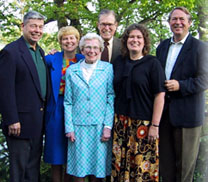
“It goes back to our parents,” the sisters observed. “All five of us kids saw how happy Mom and Dad were when they were involved — they had a lifestyle of giving. We realized early what joy it brought to have a positive impact.”
Among many other contributions to the community, Mary and Betsy’s father, Sam Carson, served on the initial Toledo Community Foundation board of trustees in 1973-78, and with his wife, Alice, established both the Carson Family Metroparks Fund and Carson Family Donor Advised Fund.
Nearly 20 years later, Betsy followed her father’s example, becoming president of the Foundation board. All the Carson children and their spouses enjoy identifying needs they can meet through the funds their parents created, and their own gifts. “We look for something that touches our heart,” said Mary. “Foundation staff can be instrumental in finding the people, projects and programs that are right for us.”
Now, to extend the tradition of giving to the next generation, establishing their own families’ donor advised funds was the natural path. “It’s too soon to know exactly what to support in the years ahead,” observed Betsy, “but we do know there are many community needs to be addressed. Our donor advised funds are a flexible way to make the decision to help others now, and define what that will become in the future.”
